- Introduction: A Treasure Chest of Childhood for 500 Yen
- The Adventure Stage: Finding a “Dagashi-ya”
- The Challenge Begins! Here is Ken’s 500-Yen Haul!
- Umaibo / Yaokin
- Kabayaki-san Taro / Kado
- Cabbage Taro / Yaokin
- Big Katsu / Suguru
- Young Donuts / Miyata Seika
- Cocoa Cigarette / Orion
- Fruit Mochi / Kyoshin Seika
- Orion Mini Cola / Orion
- Tirol Choco / Tirol Choco
- Yotchan Ika / Yotchan Foods Industry
- Taratarashitenjaneyo / Yotchan Foods Industry
- Choco Cake / Furuta Seika
- Butamen / Oyatsu Company
Introduction: A Treasure Chest of Childhood for 500 Yen
Hello! I’m Ken, the editor-in-chief of Tokyo Insider Guide.
What if I told you that with just a single 500-yen coin, you could get your hands on a treasure chest filled with the dreams of a Japanese childhood? Would you believe it?
In Japan, there’s a culture of cheap, unique, and incredibly delicious snacks called “Dagashi” (駄菓子), which you can buy for just 10 or 20 yen each. They’re not just snacks; for Japanese people, they are nostalgia itself.
In this project, I, Ken, will actually go to a dagashi shop with a single 500-yen coin in hand to report on just how exciting of an experience one can have!
The Adventure Stage: Finding a “Dagashi-ya”
Dagashi used to be sold in small, old-fashioned shops called “Dagashi-ya” (駄菓子屋). They were social hubs for children, and chatting with the old lady running the store was part of the fun. While their numbers have dwindled, you might still stumble upon one while strolling through traditional downtown areas like Tokyo’s Yanaka Ginza.
For an easier search, I recommend the dagashi corners in specialty candy stores like “Don Quijote” or “Okashi no Machioka.” Convenience stores also carry a few of the most popular dagashi.
The Challenge Begins! Here is Ken’s 500-Yen Haul!
The budget for this trip was 500 yen. Here is the exquisite lineup I seriously chose, reverting to my childhood self!
Umaibo / Yaokin
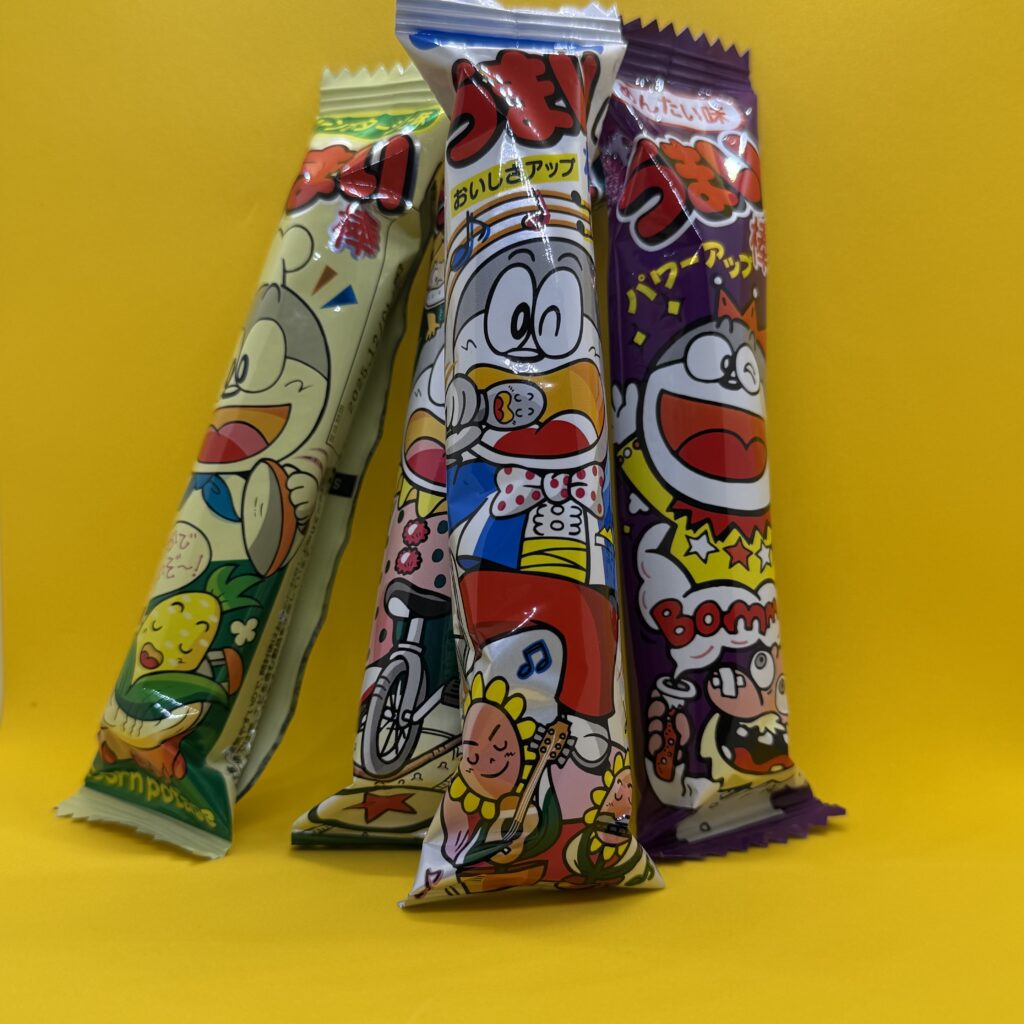
(Approx. 12 Yen)
What is it?: A puffed corn stick. It comes in an incredible number of flavors like cheese, corn potage, and mentai (spicy cod roe). It’s also fun to check for local Umaibo flavors when you travel.
Ken’s Memory: The king of dagashi. My friends and I always agonized over which flavor to choose.
Kabayaki-san Taro / Kado
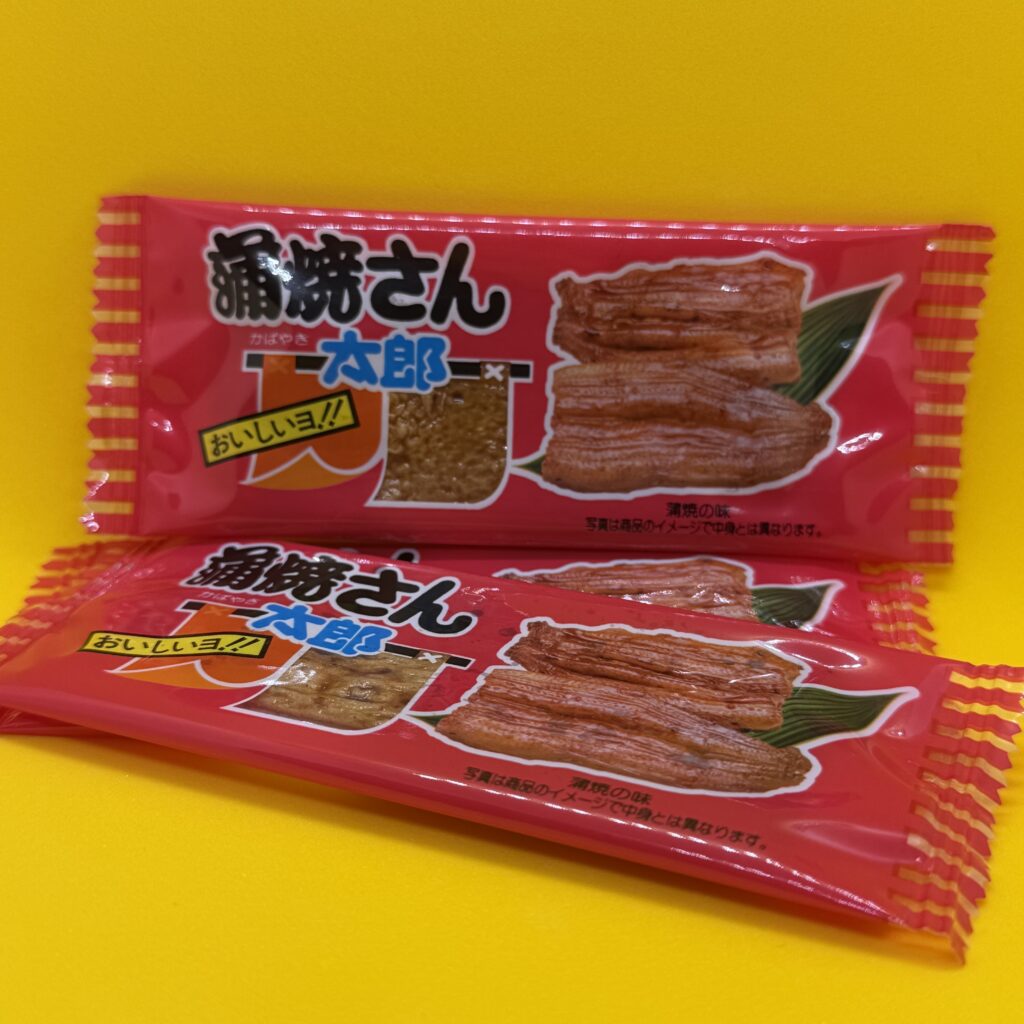
(Approx. 20 Yen)
What is it?: A sheet of minced fish paste flavored with a sweet and savory sauce resembling grilled eel.
Ken’s Memory: A dream-like snack that let kids experience the taste of luxurious “eel.” Now, it’s a great snack with beer.
Cabbage Taro / Yaokin
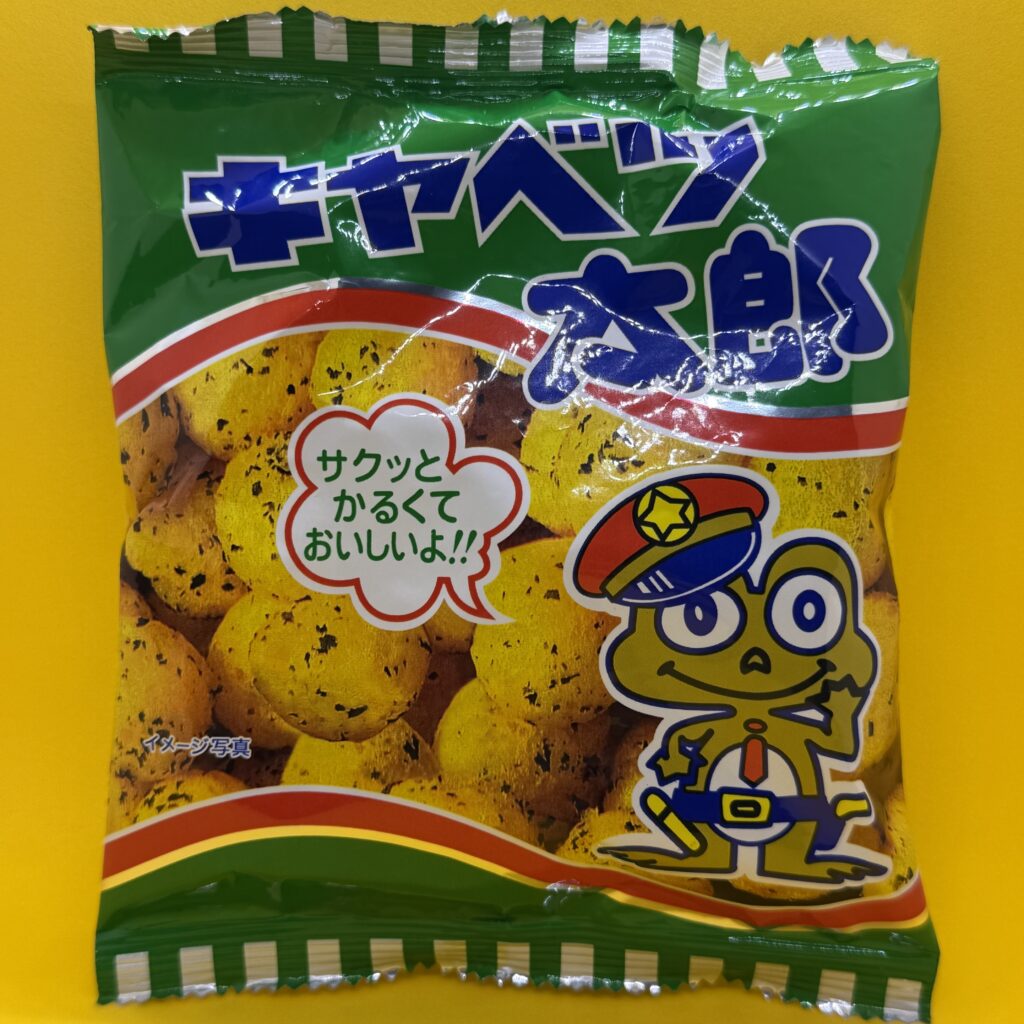
(Approx. 30 Yen)
What is it?: A round corn snack with a savory sauce flavor. It does not contain cabbage.
Ken’s Memory: Why it’s called Cabbage Taro when there’s no cabbage in it is one of the eternal mysteries for Japanese people.
Big Katsu / Suguru

(Approx. 40 Yen)
What is it?: This is also minced fish paste, but it’s breaded and fried, looking and tasting just like a pork cutlet (tonkatsu)!
Ken’s Memory: Eating this gave me the satisfaction of having a proper dinner dish.
Young Donuts / Miyata Seika
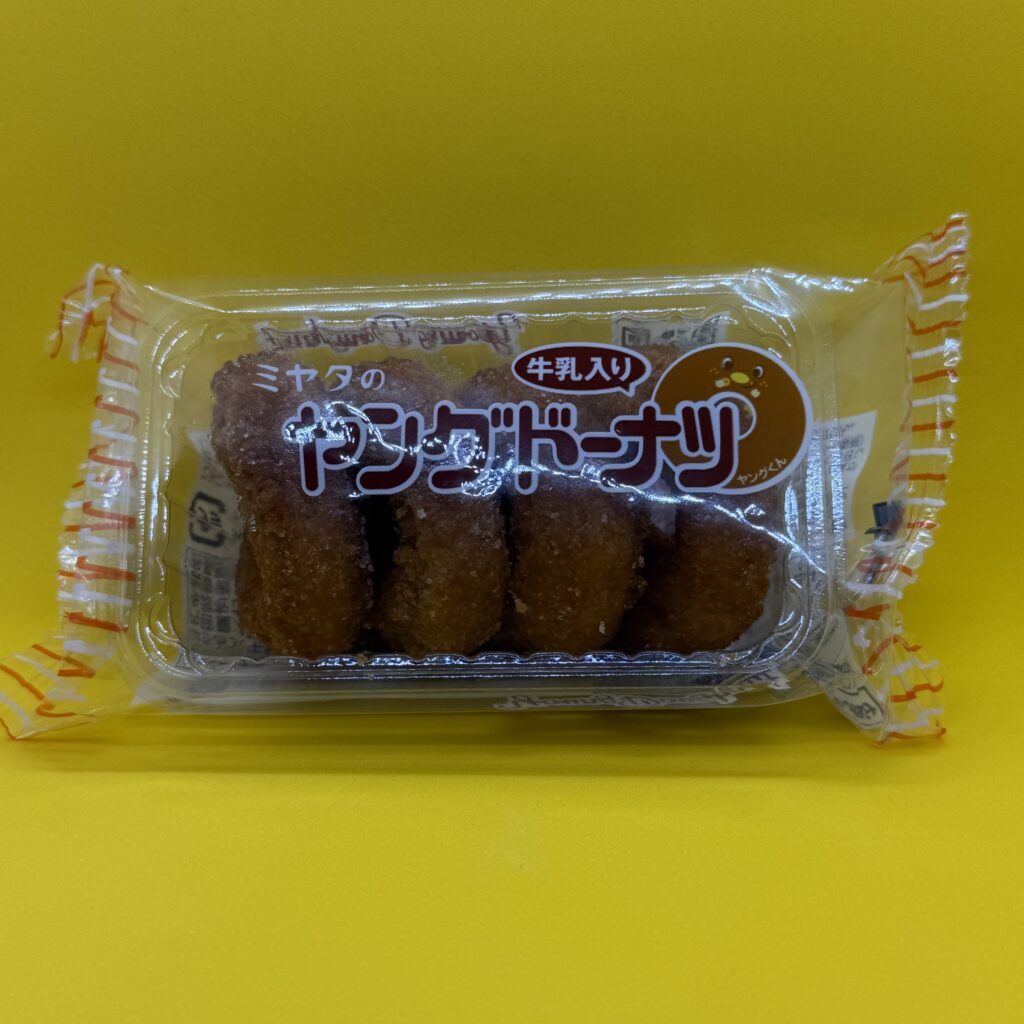
(Approx. 50 Yen)
What is it?: Small, sweet mini-donuts that come in a pack of four.
Ken’s Memory: How to divide the four donuts among friends was always an issue.
Cocoa Cigarette / Orion

(Approx. 40 Yen)
What is it?: A mint-flavored ramune candy with a box and shape that mimics a cigarette.
Ken’s Memory: It was a classic game to hold this in our mouths and pretend to be adults.
Fruit Mochi / Kyoshin Seika
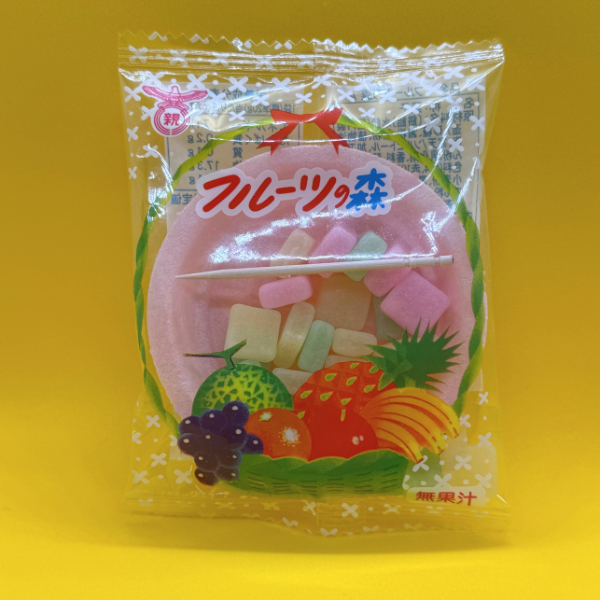
(Approx. 30 Yen)
What is it?: A small container with fruit-flavored mochi (or rather, jelly-like) candies. It’s fun to eat them one by one with the included toothpick. There are several types, some in square plastic containers, others in snack containers.
Ken’s Memory: I remember eating these slowly and savoring each one.
Orion Mini Cola / Orion
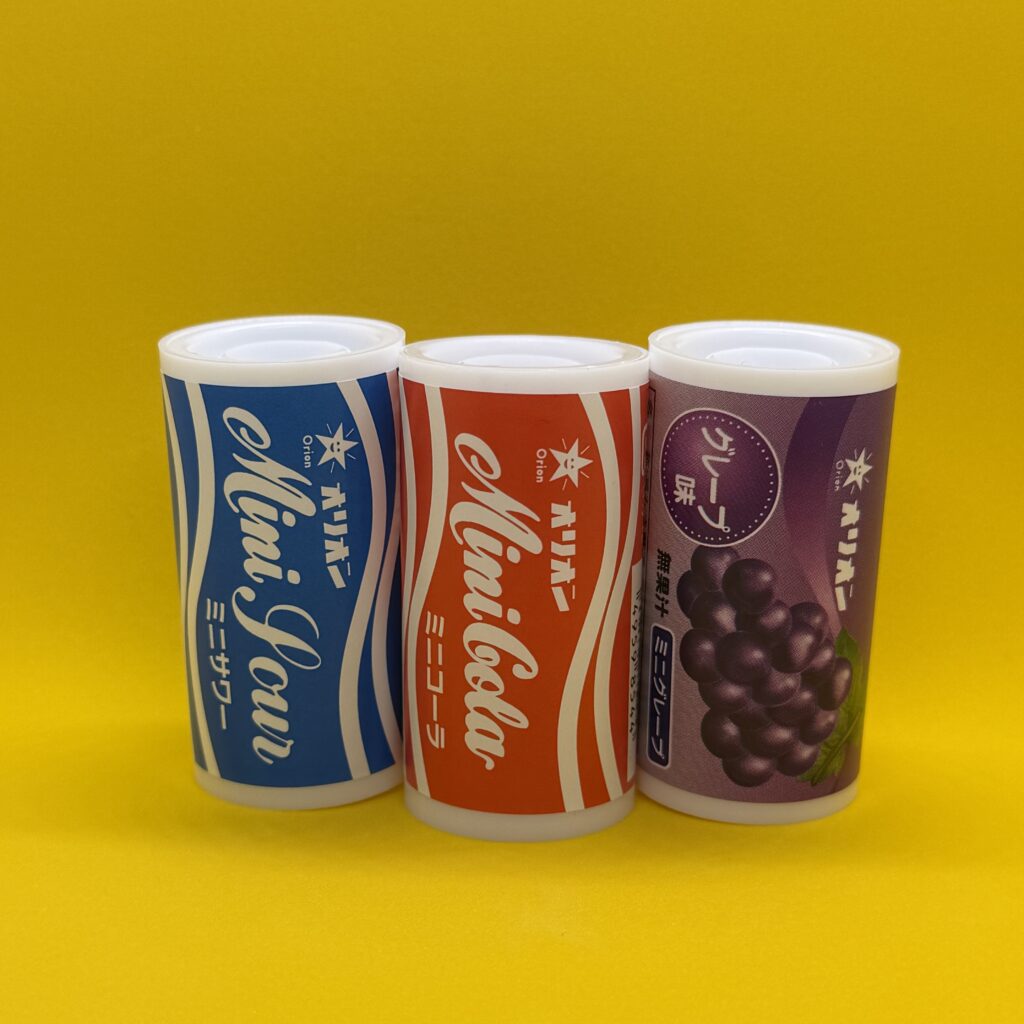
(Approx. 40 Yen)
What is it?: A cola-flavored ramune candy in a cute miniature cola can container.
Ken’s Memory: I used to collect the empty containers and line them up.
Tirol Choco / Tirol Choco
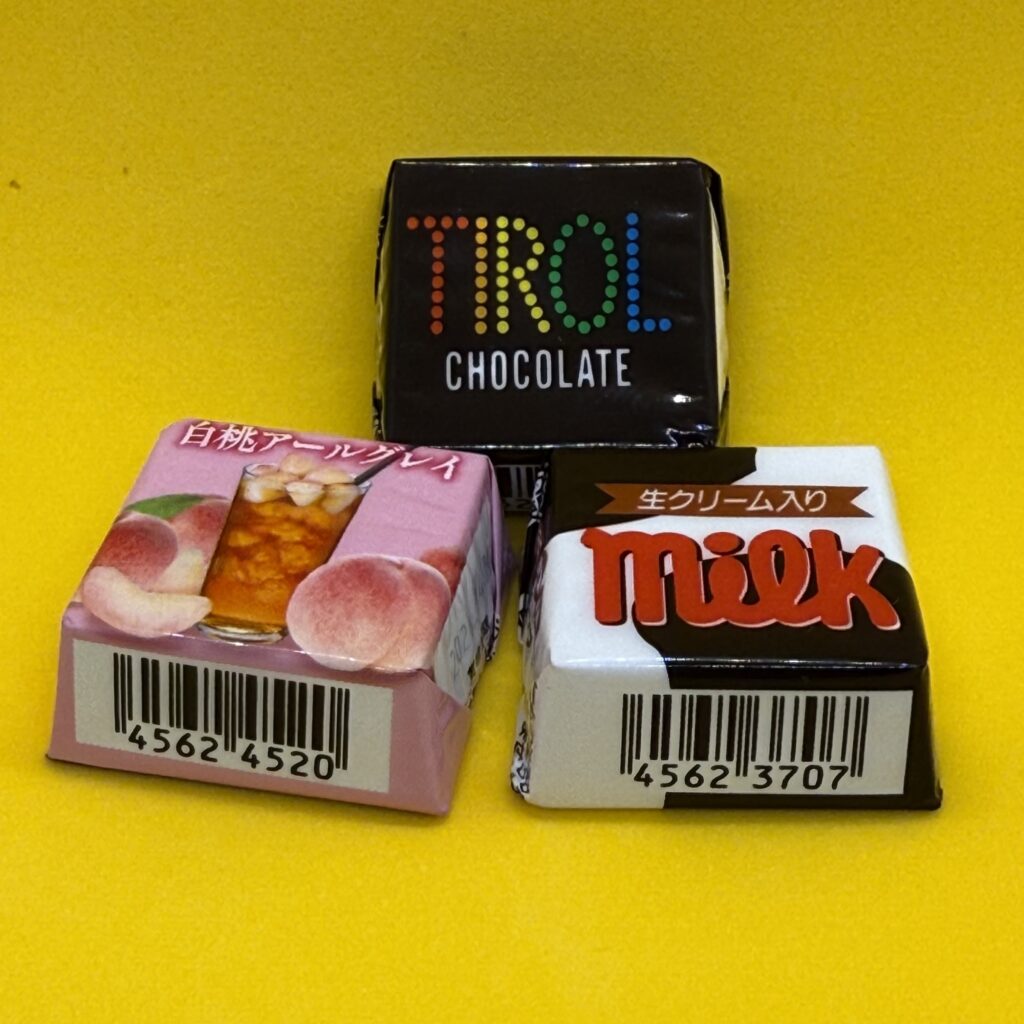
(Approx. 25 Yen)
What is it?: The king of small square chocolates. Coffee Nougat is the classic, but surprising new flavors come out every season.
Ken’s Memory: It’s a great memory to have bought these at a dagashi shop, clutching a 10-yen coin (they were 10 yen each back then).
Yotchan Ika / Yotchan Foods Industry
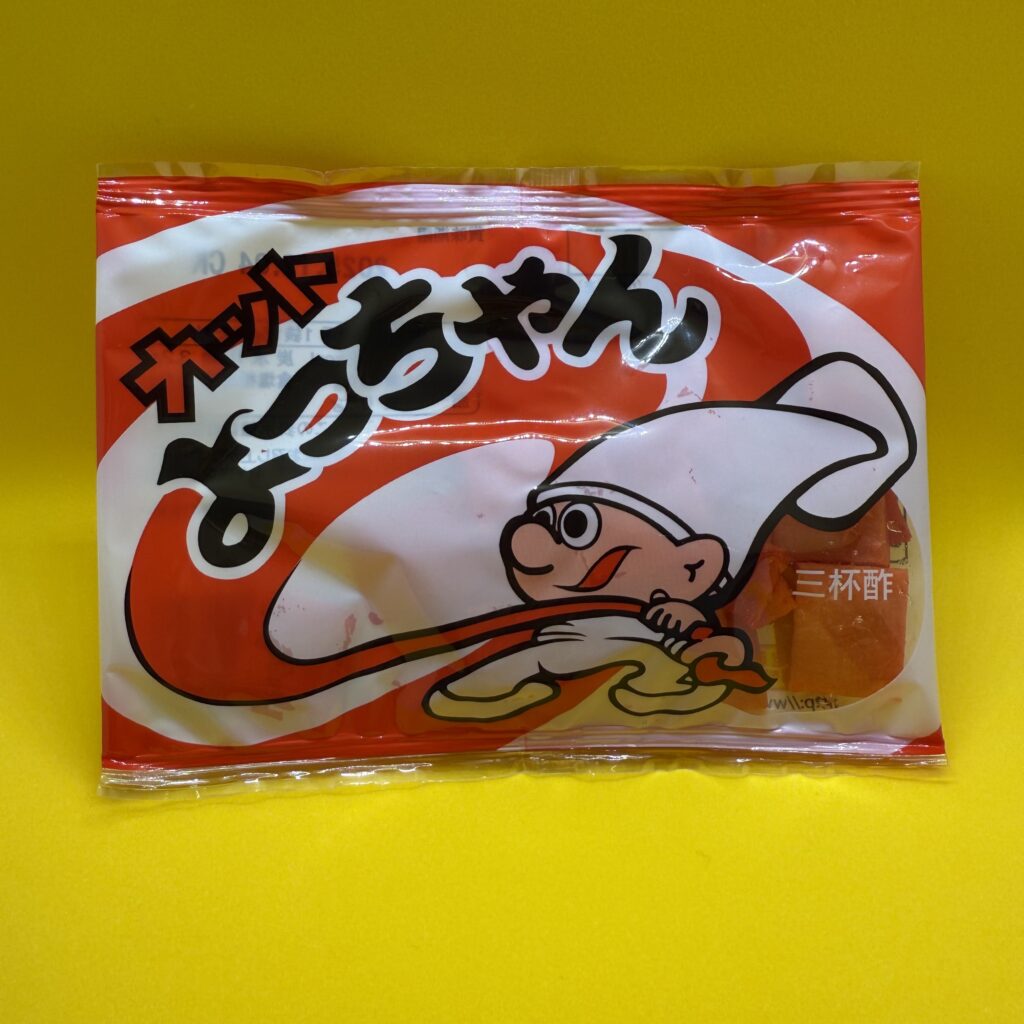
(Approx. 40 Yen)
What is it?: Pickled squid strips. It features a strong sourness and a savory seafood flavor that comes out the more you chew.
Ken’s Memory: It had a slightly grown-up taste for a kid. The ones with a lottery prize made my heart pound, wondering if I’d get another one for free.
Taratarashitenjaneyo / Yotchan Foods Industry

(Approx. 40 Yen)
What is it?: A spicy minced fish stick with a chili kick. Also recommended as a snack with beer.
Ken’s Memory: With its unique name and grown-up spiciness, this was my choice when I wanted to feel a bit more mature.
Choco Cake / Furuta Seika
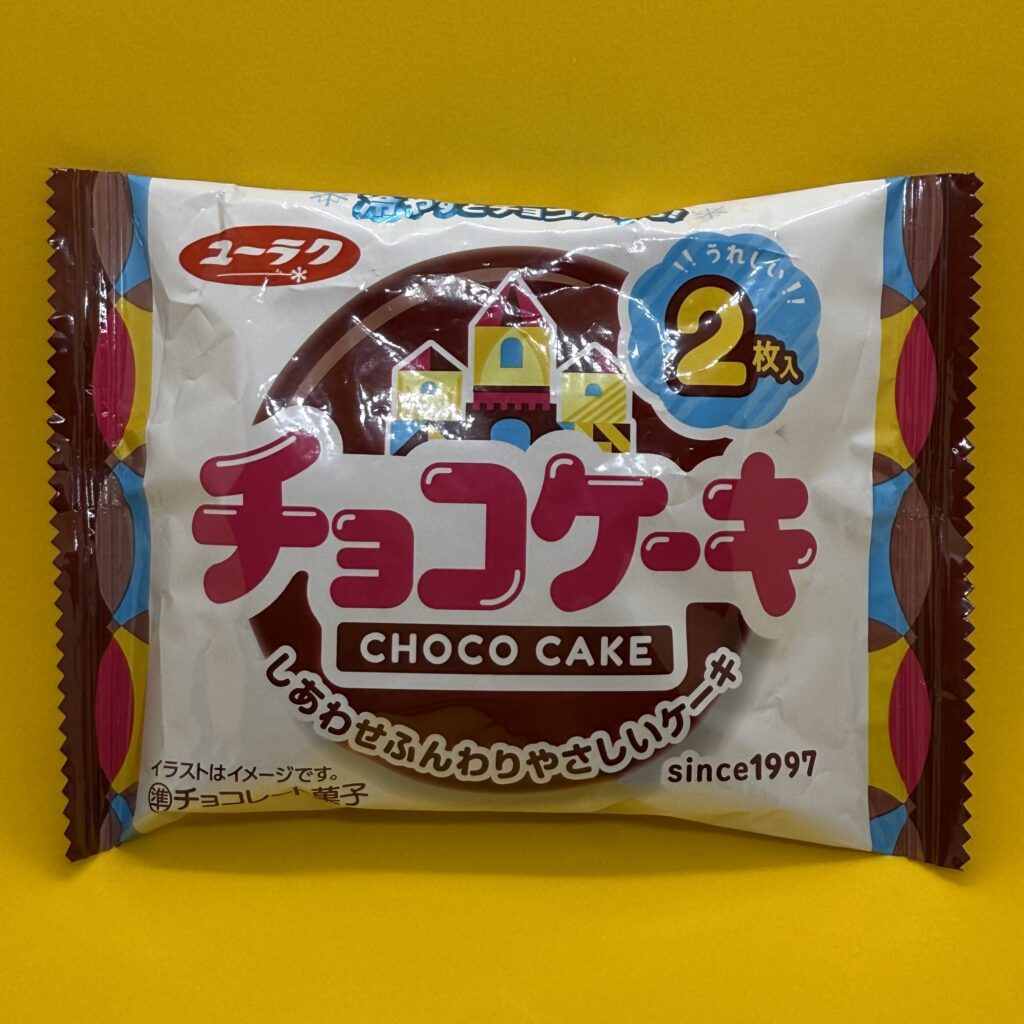
(Approx. 30 Yen)
What is it?: A small cake made of sponge cake coated in chocolate. The fact that it comes with two pieces is a nice bonus.
Ken’s Memory: Even though it was cheap, it gave me the satisfying feeling of having eaten a proper cake.
Butamen / Oyatsu Company
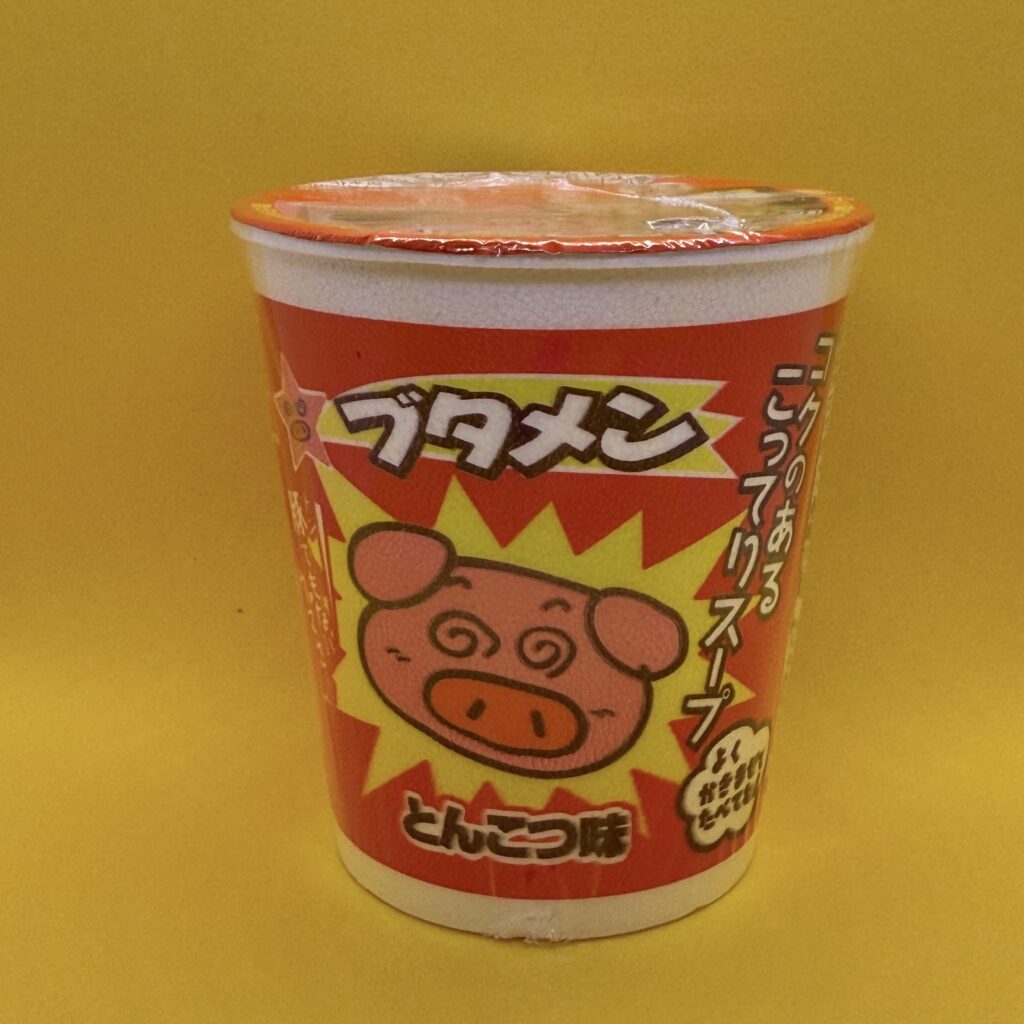
(Approx. 80 Yen)
What is it?: A mini-sized cup ramen perfect for a snack. The tonkotsu (pork bone broth) flavor is a classic.
Ken’s Memory: Having the dagashi shop staff add hot water and eating it on the spot was the ultimate luxury.
Ken’s Final Advice: Find Your Own “500 Yen” Treasure
How was it? Even after buying all this, you’ll still have change left over! There’s no right answer when it comes to choosing dagashi. The important thing is to follow your intuition and try whatever looks interesting.
When you spread out the snacks you bought for 500 yen in your hotel room, they will become the best, most personal and nostalgic souvenir you can only get in Japan. Please, enjoy your treasure hunt!

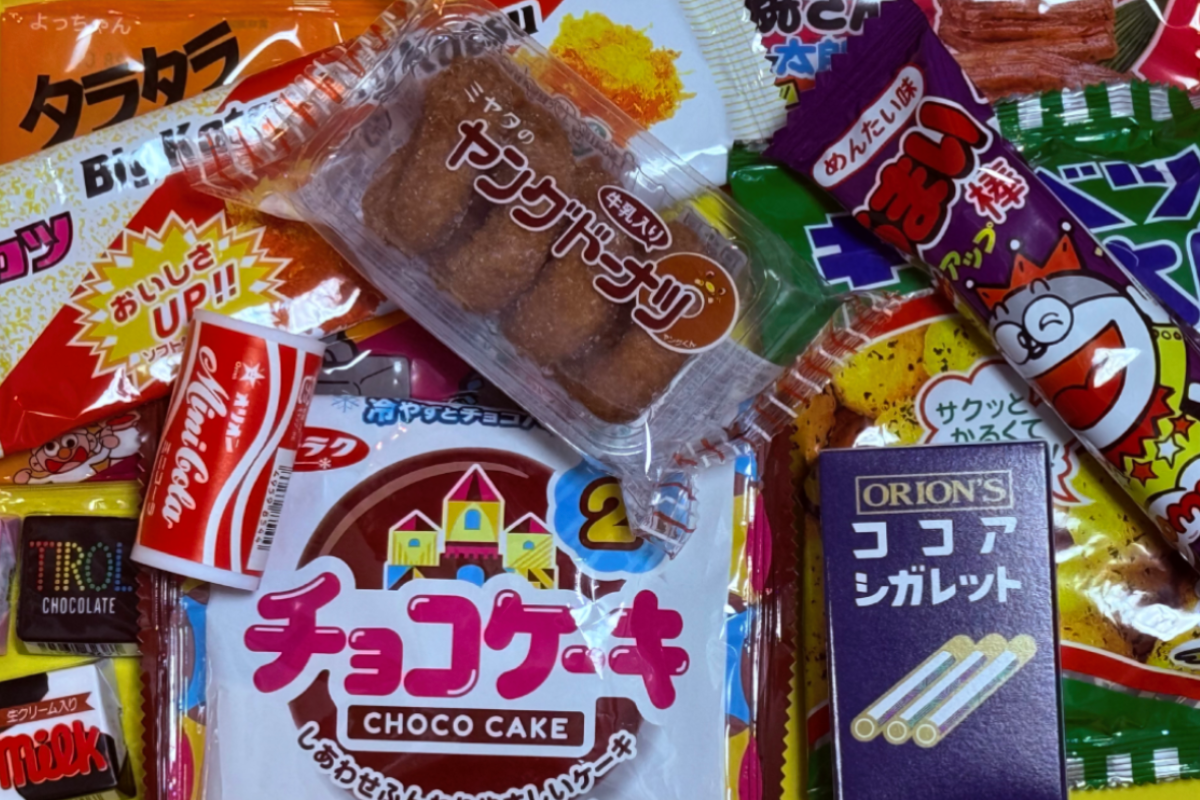


Comments